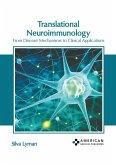
Gebundenes Buch
21. April 2019
Chiron Publications

27,99 €
Versandfertig in 1-2 Wochen
Broschiertes Buch
A Voyage with Parkinson's Toward an Intimate Autonomy
8. April 2019
Chiron Publications
Ähnliche Artikel


Gebundenes Buch
26. September 2023
American Medical Publishers

20,99 €
Versandfertig in über 4 Wochen
Gebundenes Buch
Finding Wholeness and Hope Living with Chronic Illness
4. Mai 2021
Augsburg Fortress Publishing

5,99 €
Versandfertig in 1-2 Wochen
Broschiertes Buch
The Lost Art of Convalescence
Main
13. Januar 2022
Profile Books / Wellcome Collection
8624

Gebundenes Buch
26. September 2023
American Medical Publishers

Gebundenes Buch
26. September 2023
American Medical Publishers

Gebundenes Buch
26. September 2023
American Medical Publishers


Gebundenes Buch
26. September 2023
American Medical Publishers

Ähnlichkeitssuche: Fact®Finder von OMIKRON
